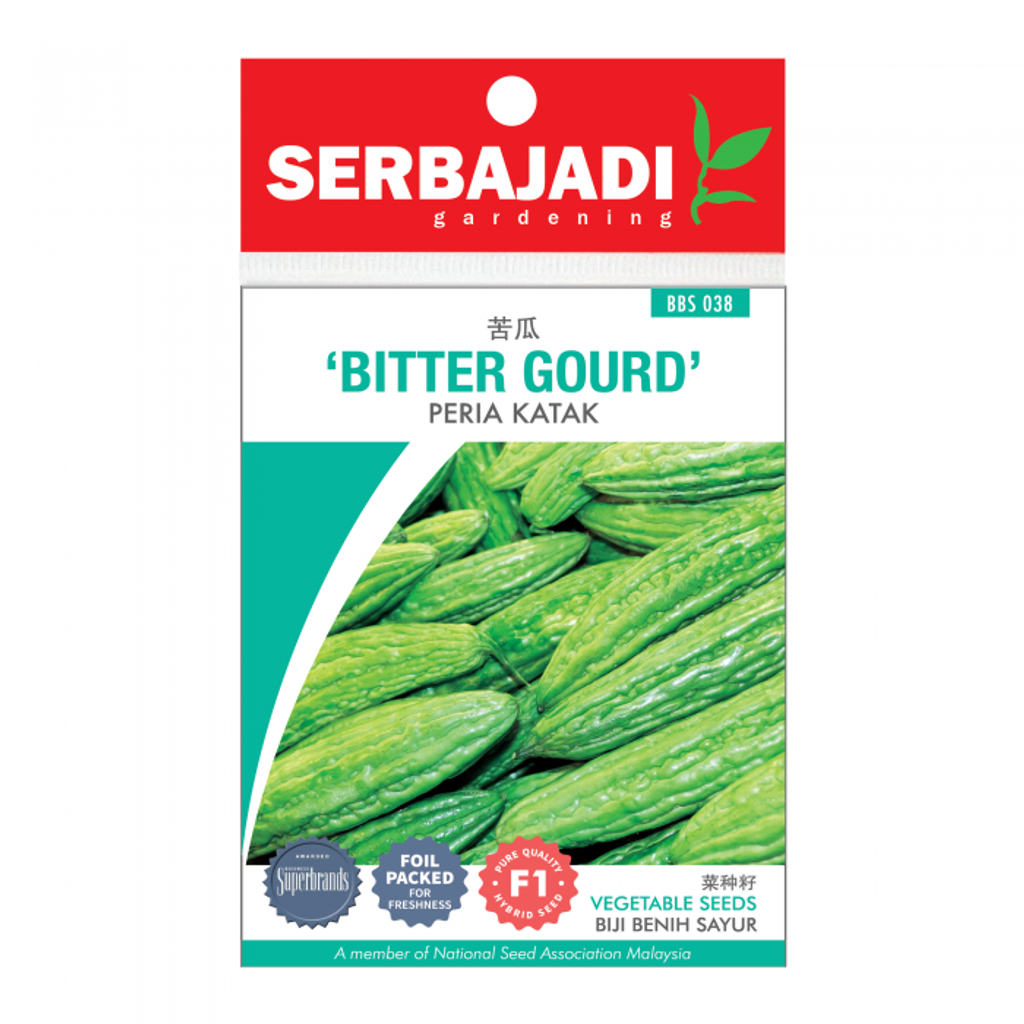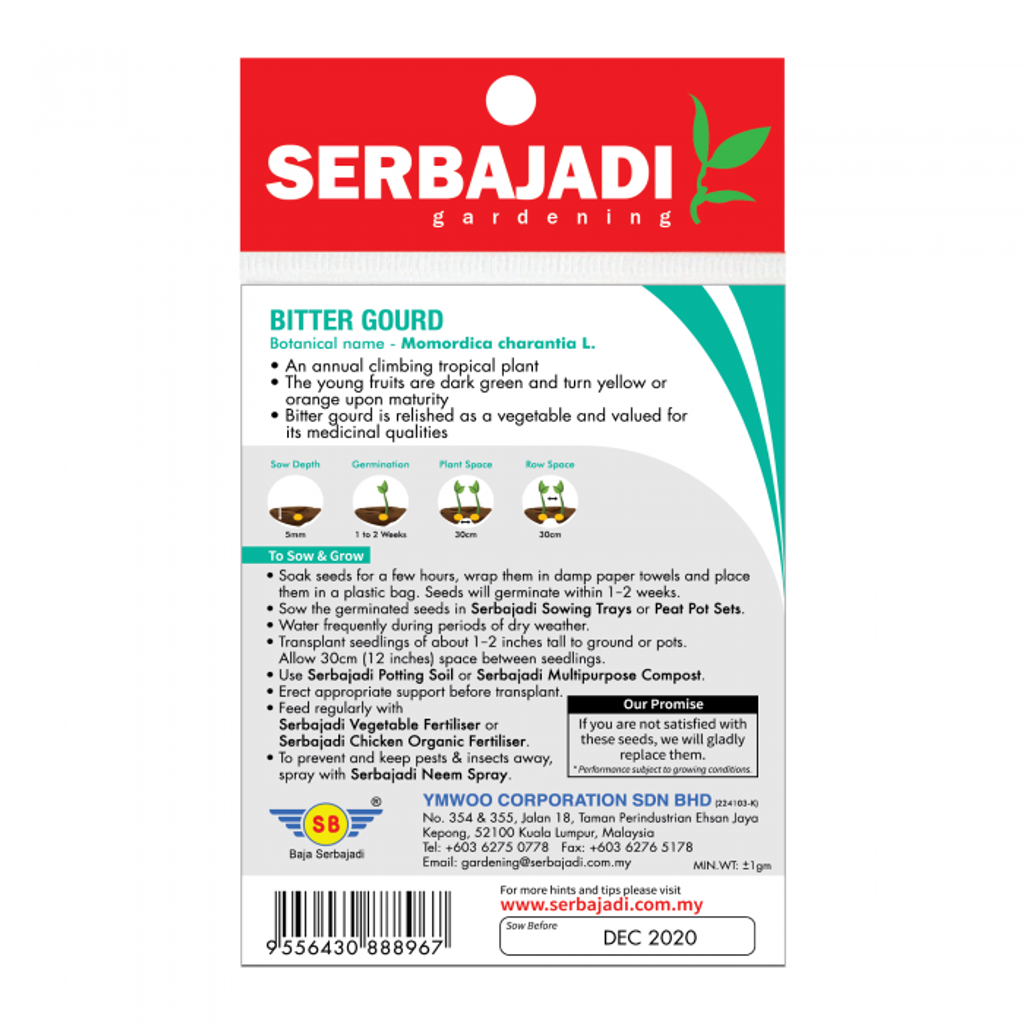Serbajadi Seeds Bitter Gourd - Peria ( BBS038 ) (+/- 195 Seeds)
Serbajadi Bitter Gourd - Momordica charantia L. (Cucurbitaceae)
Bitter gourd is an annual climbing tropical plant, with five-angled, grooved and hairy stems. The young fruits are dark green, and turn yellow or orange upon maturity. The bitter gourd is relished as a vegetable and valued for its medicinal qualities as well. Belonging to the same family as cucumbers, squashes and gourds, the gourd with its typical ribbed and pointed appearance can be anything from 2 to 10 inches long. The ripe fruit bears brown, woody seeds, embedded in a red pulp. The bitter gourd is a vegetable many find hard to enjoy because of its bitter taste. However, once you learn of its goodness and slowly acquire a taste for it, you will be able to appreciate its unique flavour, especially when it is used in certain dishes. The fruit has many uses. It can be eaten as ulam after blanching in hot water and can also be cooked as a vegetable in a variety of ways in Malay, Chinese and Indian cuisine. Deep-fried bitter gourd marinated in turmeric and spices is a common accompaniment with a banana leaf rice meal, while you could find it stir-fried with anchovies and chilies at a nasi campur stall. The Chinese may stir-fry it with egg or salted egg, boil it in soup or make yong tau foo with it. As for the nyonyas, they would cook it in a curry. If you are into juicing for health, adding some bitter gourd into your fruit and vegetable concoction would give the added boost of vitamins and minerals, and provide an uplifting flavour to your drink for sure. Bitter gourd provides a number of health benefits as it contains phytochemicals and antioxidants. It is low in calories and contains dietary fiber, minerals and vitamins. This vegetable is very nutritious with considerable amount of iron, calcium, phosphorus and other trace elements. It also contains various types of vitamins B, C and A, to help your body fight diseases. In traditional medicine, eating the fruit is said to purify the blood. It can also be used to treat skin diseases or the leaves can be boiled and the water used as a skin lotion. Bitter gourd is also noted as a type of plant insulin that helps lower blood sugar levels to help those with type 2 diabetes.
Type of vegetable: Seeds bearing fruits
Edible parts: Fruits
DIRECTION OF USE
Best soil: Bitter gourd tolerates a wide range of soil types
How to plant: Soak seeds in water for 24 hours, then wrap them in damp paper towels and put them in a plastic bag. They should germinate within a couple of days. Sow the germinated seed in modules or small pots before transplanting.
When to harvest: Immature fruits are harvested at 50-70 days from sowing. They must be picked before they ripen
How to harvest: Cut fruits from stalks with a pair of scissors or sharp knife.
Care: Bitter gourd needs plenty of water throughout growth.
STORAGE
Keep away from children and pets.
Store in cool and dry place away from direct sunlight.


